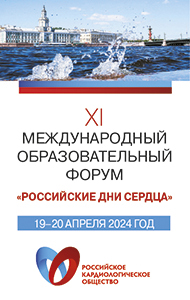Patients with rheumatic autoimmune disease at higher risk after MI
The risk of mortality was higher in patients with rheumatic autoimmune diseases at 30 days and 12 months following myocardial infarction, and patients faced lower rates of revascularization, according to recently published research.
Researchers studied two Australian population-based databases: the Victorian Linked Dataset (VLD) and the Western Australia Dara Linkage System (WADLS), which together encompass approximately 35% of the population of Australia. The researchers identified 1,409 patients with autoimmune rheumatic diseases (AIRDs) — including rheumatoid arthritis, systemic lupus erythematosus, psoriatic arthritis, polymyalgia rheumatica, ankylosing spondylitis, enteropathic arthritis, undifferentiated spondyloarthropies, necrotizing vasculitis, Sjögren’s syndrome, mixed connective tissue disease and forms of myositis — who also experienced myocardial infarction (MI). Cardiovascular deaths were identified and included those caused by myocardial infarction (MI), angina pectoris, ischemic heart attack, congestive heart failure, cardiomyopathy, arrhythmias, pulmonary edema, stroke, thromboembolism and cardiac arrest. Covariates included age, gender, socioeconomic status, location relative to goods and services including health care services, smoking status, hypertension and hyperlipidemia.
Patients with AIRD and MI were compared with 77,981 patients with MI but without AIRD and tended to be older (77 years vs. 74 years), were more likely to be women (63.5% vs. 39.1%) and were less likely to be treated in public hospitals (63.7% vs. 66.8%). Patients with AIRD and MI were more likely to have renal disease (20.2% vs. 12.4%), pulmonary disease (11.4% vs. 7.6%) and more likely to experience a cerebral vascular event (7.3% vs. 5.4%). However, patients with AIRD were less likely to have hypertension 41.1% vs. 44.5%), current smoking status (11.9% vs. 20.3%), hyperlipidemia (10.2% vs. 16.4%) or cancer (4.7% vs. 6.1%), according to the researchers.
After adjusting for covariates, patients with AIRD had an odds ratio (OR) of 1.44 for 30-day, all-cause mortality. Cardiovascular mortality 30 days after MI was 18.9% for patients with AIRD compared with 11.7% of patients without AIRD. After 12 months, the all-cause mortality rate was 38.6% for patients with AIRD compared with 22.8% of patients without AIRD, resulting in an adjusted OR of 1.82.
Cardiovascular-related mortality in patients with AIRD was 32.9% compared with 19.4% in patients without AIRD, with an adjusted OR of 1.71, according to the researchers. – by Shirley Pulawski
Disclosure: The researchers report no relevant financial disclosures.
Source: www.healio.com






